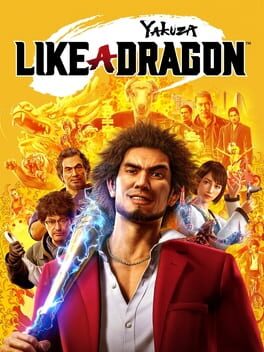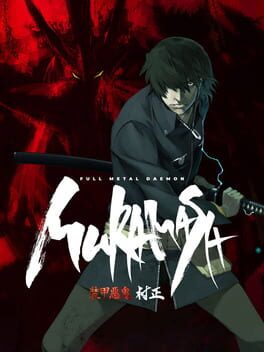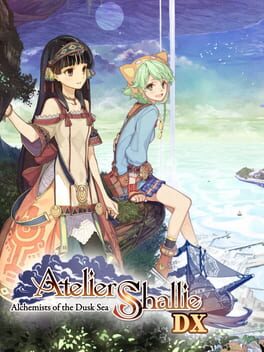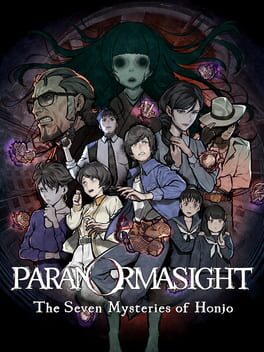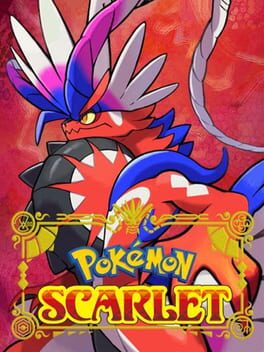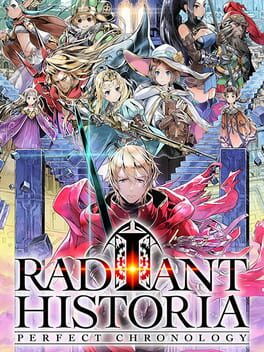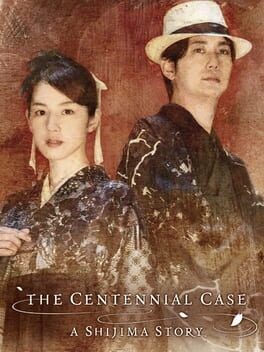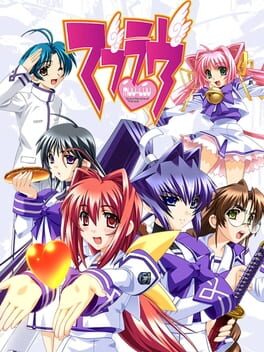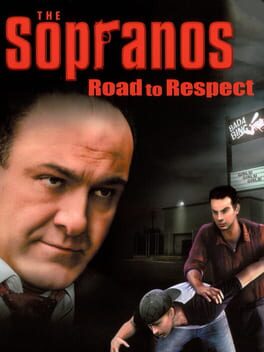falsenine
53 Reviews liked by falsenine
Muv-Luv Alternative
2006
Muv-Luv Alternative
2006
Muv-Luv Alternative is a hugely memorable piece of media that I will have fond memories of for a long time... and one that I don't think I could recommend to anyone!
If you can think of a theme that you might possibly want to explore in a game where you are isekai'd into a giant mecha war against space aliens, Muv-Luv Alternative covers it in excruciating detail several times over. Nationalism, fascism, pride and shame in your country, duty, fear, what it means to be human, quantum causality, iyaa uguu hidoi Takeru-chan - be ready to have the protagonist experience a full range of emotions and ever-changing opinions on all these topics. It all feels very unfocused and stream of consciousness, but that might be the point. Takeru is meant to be lost and confused. Most of the game is about him trying to find a "guiding light" and solidify his views rather than running with whatever emotion comes to him first.
Unfortunately, this also means that you will be retreading the same ground over and over again. Coming to terms with your world being torn apart isn't going to happen overnight, but the sheer repetition kills the pacing too often. A good editor could easily cut 20 hours from the total play time and not lose anything important.
The last few hours contain the highest highs and lowest lows of the game by far. A daring final mission with some real fist-pumping moments is sandwiched between an unsatisfying and much-too-tidy ending and an H-scene that was entirely unnecessary. It was as though the author thought "visual novels are supposed to have scenes like this" and lazily wrote in an excuse to linger on some gratuitous unpleasantness.
I'm glad I played through the main series of Muv-Luv to gain a greater context for visual novels outside of one-shot adventure games like Ace Attorney or Snatcher, but the sheer length coupled with the constant repetition and ecchi/full-on-hentai makes it impossible to suggest anyone take the plunge unless they're already pretty tolerant of all that.
If you can think of a theme that you might possibly want to explore in a game where you are isekai'd into a giant mecha war against space aliens, Muv-Luv Alternative covers it in excruciating detail several times over. Nationalism, fascism, pride and shame in your country, duty, fear, what it means to be human, quantum causality, iyaa uguu hidoi Takeru-chan - be ready to have the protagonist experience a full range of emotions and ever-changing opinions on all these topics. It all feels very unfocused and stream of consciousness, but that might be the point. Takeru is meant to be lost and confused. Most of the game is about him trying to find a "guiding light" and solidify his views rather than running with whatever emotion comes to him first.
Unfortunately, this also means that you will be retreading the same ground over and over again. Coming to terms with your world being torn apart isn't going to happen overnight, but the sheer repetition kills the pacing too often. A good editor could easily cut 20 hours from the total play time and not lose anything important.
The last few hours contain the highest highs and lowest lows of the game by far. A daring final mission with some real fist-pumping moments is sandwiched between an unsatisfying and much-too-tidy ending and an H-scene that was entirely unnecessary. It was as though the author thought "visual novels are supposed to have scenes like this" and lazily wrote in an excuse to linger on some gratuitous unpleasantness.
I'm glad I played through the main series of Muv-Luv to gain a greater context for visual novels outside of one-shot adventure games like Ace Attorney or Snatcher, but the sheer length coupled with the constant repetition and ecchi/full-on-hentai makes it impossible to suggest anyone take the plunge unless they're already pretty tolerant of all that.
Pokémon Scarlet
2022
I didn't originally intend to play this pokemon gen, but a friend brought the double pack and gave me one of his versions to try out. He also did breed the two starters i missed so i was enthusiastically starting the journey with my 3 starter + the flying pikachu team.
I have to say that i can't remember the last time i enjoyed a pokemon game quite like this one (must be gen 5 i guess). The freedom to just choose somewhere on the worldmap, put it into your google maps and just go JOLO. That's my kind open world play. In a level 9 area i found a 29 Vespiquen which i really wanted to catch, but my team was level 16. My fire attacks did little, and she had Roost and Swagger. The fight that followed was poisoning it with my grey wooper and stalling out for a lot of turns slowly wearing it down while trying not to get wiped out. doing stuff you are majorly underleveld for really deepens the mechanical side of the game more than ever.
Personally i didn't encounter major bugs yet, just some framerate drops here and there, and minor area glitches. I have autosave in options off so that probably helped. I regularly play retrogames, and i grew up with pokemon gen 1, so i didn't find this game that ugly. But i'm not a person that cares much in that department.
This game positively surprised me, the backlash feels a bit overblown and only looks at the technical side of things. If the game gets patched i might even bump the rating up.
I have to say that i can't remember the last time i enjoyed a pokemon game quite like this one (must be gen 5 i guess). The freedom to just choose somewhere on the worldmap, put it into your google maps and just go JOLO. That's my kind open world play. In a level 9 area i found a 29 Vespiquen which i really wanted to catch, but my team was level 16. My fire attacks did little, and she had Roost and Swagger. The fight that followed was poisoning it with my grey wooper and stalling out for a lot of turns slowly wearing it down while trying not to get wiped out. doing stuff you are majorly underleveld for really deepens the mechanical side of the game more than ever.
Personally i didn't encounter major bugs yet, just some framerate drops here and there, and minor area glitches. I have autosave in options off so that probably helped. I regularly play retrogames, and i grew up with pokemon gen 1, so i didn't find this game that ugly. But i'm not a person that cares much in that department.
This game positively surprised me, the backlash feels a bit overblown and only looks at the technical side of things. If the game gets patched i might even bump the rating up.
Played with BertKnot.
As crime fiction is a genuine institution in Japan, it is not uncommon to see directors or scriptwriters trying their hand at it, on a whim. We could multiply the examples, so common is it: we have to admit that video games and dramas often see attempts, more or less successful, to tell detective stories. The Centennial Case seems to more or less follow this trend. Although the director, Koichiro Ito, had already delivered 428: Shibuya Scramble (2008) and TRICK×LOGIC (2010), the rest of the team seems to be quite new to the field. Junichi Ehara is most known for NieR: Automata (2017), while scenario writer Yasuhito Tachibana is primarily a director of TV series, which have never come close to the investigative genres. Of course, one should not too easily prejudge the quality of The Centennial Case on the basis of these elements: after all, The Portopia Serial Murder Case (1983) is one of the very first games by Yuuji Horii (Dragon Quest), while Famicom Tantei Club: Kieta Koukeisha (1988) was the brainchild of Yoshio Sakamoto (Metroid).
This background seems necessary to understand what the game is attempting to achieve. An FMV detective drama, which interweaves several cases into one another, it has a structure that is very reminiscent of the spirit of Japanese dramas. This is understandable given the presence of Tachibana as lead writer. The story features a crime novelist, Haruka Kagami, who is invited to investigate the Shijima estate. A skeleton has been found under the centuries-old cherry tree and the writer is asked to find the identity of the corpse. The investigation takes a mysterious turn when the family elder is poisoned just after a traditional ceremony. A murder follows the incident and Haruka begins to investigate, soon discovering that there seems to be a link between the mysteries of the present and others that have punctuated the Shijima family's history for the last century. To discover the truth about the present, she therefore solves thoses past cases, presented to her through several hanshi-bon. This approach allows the game to be chaptered and to alternate between different eras. The distinctive feature is that the game reuses the same actors across the periods, a choice that lies at the heart of the title's stylistic and narrative proposition.
Such an approach is not in vain and allows to create rather interesting atmospheres, that borrow from a certain Japanese traditionalism. In a way, it would have been difficult to replicate this impression with a visual novel. However, the production remains generally average and the acting is never brilliant. Some would say that, in this respect, the game succeeds quite well in imitating the dramas that punctuate Japanese television schedules. The issue lies in the implementation of interactivity. Unlike Ace Attorney, where the player has the latitude to explore and where dialogue allows the investigation to progress organically, The Centennial Case places the player in an aggravated state of passivity. During the FMV sequences, it is entirely possible to put the controller down and do nothing: the game does try to force interactivity with some sort of QTE to retrieve clues at various moments, but they are, in any case, given automatically just before the Reasoning Phase. Similarly, some discussions require the player to choose an answer, but this has no influence on the course of events. As such, the game admits that it must be viewed and solved like a film, a fact that does not necessarily speak in its favour.
The Reasoning Phases themselves are a game design disaster. In essence, it's all about matching clues to questions, which leads to the acquisition of hypotheses. These can be used in the final phase of each chapter to confront the culprit. On paper, the idea could work, but its implementation is absurdly cumbersome. The volume of clues given is excessively large, so that it is difficult to get a clear picture, while many of the hypotheses are false leads, more or less stupid. One could consider that it is feasible to discover only the relevant hypotheses so as to save time, but another problem arises. This is because the game keeps its twist for the conclusive phase, and therefore the hypotheses do not usually point directly to the solution. It is therefore difficult to determine which ones are necessary and which ones are superfluous.
As for the mysteries, they are at best artificial and at worst implausible. Chapters 1 and 4 are trivial, as they reveal the solution to the mystery too unsubtly, while chapter 2 makes little sense in the modus operandi. The only exception is Chapter 3, whose nightclub investigation is rather well crafted: it relies on a trope familiar to those used to crime fiction, but the execution is convincing, insofar as the psychological element is well taken into account. The title also tries to renew its gameplay with chapter 5 which, in its escape game logic, is very reminiscent of the Zero Escape series. Once again, the idea is not wrong, but the gameplay remains very clumsy: the hypothesis creation sequences are even more frustrating, while the puzzles struggle to be really engaging.
For the rest, The Centennial Case fails to convince. In its last chapter, Haruka's deductive line is particularly hazy and is based solely on intuition. No formal element allows her to reach the truth and the resolution is thus more disappointing than expected. Indeed, it is not very difficult to identify the final culprit by the second chapter, but the ease with which they concede is frustrating. This is the general impression that remains for every case. While the Reasoning Phase is a particularly long and uninteresting process, the presentation of the findings always seems too quick and never rigorous enough. Of course, lay players will appreciate the twists in each case, but veterans will see the contrivances very easily, spoiling the potential of the title.
The Centennial Case thus offers a rather strange story, which blends shin honkaku a la Kindaichi shounen no jikenbo and Detective Conan, with a curious armchair approach. An almost metatextual reflection on detective fiction and its writing is shaped – the epilogue, of outstanding quality with a real subtlety in the detective writing, makes it clear why the title is in FMV –, but the game didn't manage to carry its idea through. Indeed, Haruka's deductions require the various cases recounted in the books to be absolutely true. This is somewhat a discursive failure, preventing the discussion of the falsification of the detective story and the value of the truth it carries: this theme is addressed much more frontally by Umineko no Naku Koro ni (2007), building on the considerations that surrounded Christie's And Then There Were None (1939).
For all that, The Centennial Case is far from uninteresting. It is representative of Japanese culture's love of detective stories, as well as its historical importance in video game production. A very large number of titles have been released on the various Japanese platforms, but few have been translated. In the best of cases, amateur translations make it possible to discover certain titles: this is the case for Kamaitachi no Yoru (1994). More recently, the localisation of Famicom Detective Club (2021) perhaps prefigures a turning point for the Japanese detective video game and its overseas release. The Centennial Case seems to pursue this objective, while being a resolutely Japanese detective fiction, whether it be in the family corporations, the attraction for past traditions, the debt of blood, the melancholy of existence, the place of women in this society or the weight of immortality. The game thus opens a very interesting window on an important part of Japanese cultural production. If the attempt, because of its gameplay, fails to completely live up to its ambitions, let us hope that it paves the way for other titles.
As crime fiction is a genuine institution in Japan, it is not uncommon to see directors or scriptwriters trying their hand at it, on a whim. We could multiply the examples, so common is it: we have to admit that video games and dramas often see attempts, more or less successful, to tell detective stories. The Centennial Case seems to more or less follow this trend. Although the director, Koichiro Ito, had already delivered 428: Shibuya Scramble (2008) and TRICK×LOGIC (2010), the rest of the team seems to be quite new to the field. Junichi Ehara is most known for NieR: Automata (2017), while scenario writer Yasuhito Tachibana is primarily a director of TV series, which have never come close to the investigative genres. Of course, one should not too easily prejudge the quality of The Centennial Case on the basis of these elements: after all, The Portopia Serial Murder Case (1983) is one of the very first games by Yuuji Horii (Dragon Quest), while Famicom Tantei Club: Kieta Koukeisha (1988) was the brainchild of Yoshio Sakamoto (Metroid).
This background seems necessary to understand what the game is attempting to achieve. An FMV detective drama, which interweaves several cases into one another, it has a structure that is very reminiscent of the spirit of Japanese dramas. This is understandable given the presence of Tachibana as lead writer. The story features a crime novelist, Haruka Kagami, who is invited to investigate the Shijima estate. A skeleton has been found under the centuries-old cherry tree and the writer is asked to find the identity of the corpse. The investigation takes a mysterious turn when the family elder is poisoned just after a traditional ceremony. A murder follows the incident and Haruka begins to investigate, soon discovering that there seems to be a link between the mysteries of the present and others that have punctuated the Shijima family's history for the last century. To discover the truth about the present, she therefore solves thoses past cases, presented to her through several hanshi-bon. This approach allows the game to be chaptered and to alternate between different eras. The distinctive feature is that the game reuses the same actors across the periods, a choice that lies at the heart of the title's stylistic and narrative proposition.
Such an approach is not in vain and allows to create rather interesting atmospheres, that borrow from a certain Japanese traditionalism. In a way, it would have been difficult to replicate this impression with a visual novel. However, the production remains generally average and the acting is never brilliant. Some would say that, in this respect, the game succeeds quite well in imitating the dramas that punctuate Japanese television schedules. The issue lies in the implementation of interactivity. Unlike Ace Attorney, where the player has the latitude to explore and where dialogue allows the investigation to progress organically, The Centennial Case places the player in an aggravated state of passivity. During the FMV sequences, it is entirely possible to put the controller down and do nothing: the game does try to force interactivity with some sort of QTE to retrieve clues at various moments, but they are, in any case, given automatically just before the Reasoning Phase. Similarly, some discussions require the player to choose an answer, but this has no influence on the course of events. As such, the game admits that it must be viewed and solved like a film, a fact that does not necessarily speak in its favour.
The Reasoning Phases themselves are a game design disaster. In essence, it's all about matching clues to questions, which leads to the acquisition of hypotheses. These can be used in the final phase of each chapter to confront the culprit. On paper, the idea could work, but its implementation is absurdly cumbersome. The volume of clues given is excessively large, so that it is difficult to get a clear picture, while many of the hypotheses are false leads, more or less stupid. One could consider that it is feasible to discover only the relevant hypotheses so as to save time, but another problem arises. This is because the game keeps its twist for the conclusive phase, and therefore the hypotheses do not usually point directly to the solution. It is therefore difficult to determine which ones are necessary and which ones are superfluous.
As for the mysteries, they are at best artificial and at worst implausible. Chapters 1 and 4 are trivial, as they reveal the solution to the mystery too unsubtly, while chapter 2 makes little sense in the modus operandi. The only exception is Chapter 3, whose nightclub investigation is rather well crafted: it relies on a trope familiar to those used to crime fiction, but the execution is convincing, insofar as the psychological element is well taken into account. The title also tries to renew its gameplay with chapter 5 which, in its escape game logic, is very reminiscent of the Zero Escape series. Once again, the idea is not wrong, but the gameplay remains very clumsy: the hypothesis creation sequences are even more frustrating, while the puzzles struggle to be really engaging.
For the rest, The Centennial Case fails to convince. In its last chapter, Haruka's deductive line is particularly hazy and is based solely on intuition. No formal element allows her to reach the truth and the resolution is thus more disappointing than expected. Indeed, it is not very difficult to identify the final culprit by the second chapter, but the ease with which they concede is frustrating. This is the general impression that remains for every case. While the Reasoning Phase is a particularly long and uninteresting process, the presentation of the findings always seems too quick and never rigorous enough. Of course, lay players will appreciate the twists in each case, but veterans will see the contrivances very easily, spoiling the potential of the title.
The Centennial Case thus offers a rather strange story, which blends shin honkaku a la Kindaichi shounen no jikenbo and Detective Conan, with a curious armchair approach. An almost metatextual reflection on detective fiction and its writing is shaped – the epilogue, of outstanding quality with a real subtlety in the detective writing, makes it clear why the title is in FMV –, but the game didn't manage to carry its idea through. Indeed, Haruka's deductions require the various cases recounted in the books to be absolutely true. This is somewhat a discursive failure, preventing the discussion of the falsification of the detective story and the value of the truth it carries: this theme is addressed much more frontally by Umineko no Naku Koro ni (2007), building on the considerations that surrounded Christie's And Then There Were None (1939).
For all that, The Centennial Case is far from uninteresting. It is representative of Japanese culture's love of detective stories, as well as its historical importance in video game production. A very large number of titles have been released on the various Japanese platforms, but few have been translated. In the best of cases, amateur translations make it possible to discover certain titles: this is the case for Kamaitachi no Yoru (1994). More recently, the localisation of Famicom Detective Club (2021) perhaps prefigures a turning point for the Japanese detective video game and its overseas release. The Centennial Case seems to pursue this objective, while being a resolutely Japanese detective fiction, whether it be in the family corporations, the attraction for past traditions, the debt of blood, the melancholy of existence, the place of women in this society or the weight of immortality. The game thus opens a very interesting window on an important part of Japanese cultural production. If the attempt, because of its gameplay, fails to completely live up to its ambitions, let us hope that it paves the way for other titles.
Muv-Luv
2003
Fuck it - I was in the middle of a Sopranos rewatch anyway and it's only 3 hours long, so why the hell not? Purports to be set in the middle of Season 5, though there isn't much to suggest that beyond a surprisingly well-rendered and well-acted Satriale gang showing up every once in a while to do a catchphrase for your amusement. A testament to the professional calibre of guys like Gandolifini and Imperioli that they actually read some of this "PRESS THE SQUARE BUTTON TO GRAB" shit at the same level as the gold David Chase and Matthew Weiner were weaving for them on the TV programme.
Unfortunately, there's no direct references to the ongoing storylines that were on television at the time, but that's maybe for the best given that Season 5 was mostly dealing with PlayStation 2-unfriendly topics like the impossibility of dissolving a marriage, the effects and ennui of Alzheimer's disease and the fundamentally immutable nature of human beings. It's very amusing to imagine Tony coming back to the Bing after one of this season's countless heart-wrenching conversations with his Uncle Jun or Carmela to dispense a [COLLECT 5 PASTRAMI SANDWICHES] fetchquest for our player-character.
Feels downright surreal at times to be playing a punch-punch-kick beat 'em up based on one of television's most legitimately prestigious works of art, and is worth playing for that reason alone; honestly, this isn't that far off, I dunno, "THE WIRE KART" or "MAD MEN: A TELLTALE SERIES". For my sins, I'm also playing Buffy the Vampire Slayer: Chaos Bleeds at the moment and even a campy little show like that feels tightly constricted by the chains of videogamedom. If nothing else, it was nice to walk around the Bing and other locations from the show and see all the sets connected together into a cohesive collection of liminal spaces I know. Just wish there was an Alabama 3 driving mission.
Unfortunately, there's no direct references to the ongoing storylines that were on television at the time, but that's maybe for the best given that Season 5 was mostly dealing with PlayStation 2-unfriendly topics like the impossibility of dissolving a marriage, the effects and ennui of Alzheimer's disease and the fundamentally immutable nature of human beings. It's very amusing to imagine Tony coming back to the Bing after one of this season's countless heart-wrenching conversations with his Uncle Jun or Carmela to dispense a [COLLECT 5 PASTRAMI SANDWICHES] fetchquest for our player-character.
Feels downright surreal at times to be playing a punch-punch-kick beat 'em up based on one of television's most legitimately prestigious works of art, and is worth playing for that reason alone; honestly, this isn't that far off, I dunno, "THE WIRE KART" or "MAD MEN: A TELLTALE SERIES". For my sins, I'm also playing Buffy the Vampire Slayer: Chaos Bleeds at the moment and even a campy little show like that feels tightly constricted by the chains of videogamedom. If nothing else, it was nice to walk around the Bing and other locations from the show and see all the sets connected together into a cohesive collection of liminal spaces I know. Just wish there was an Alabama 3 driving mission.
